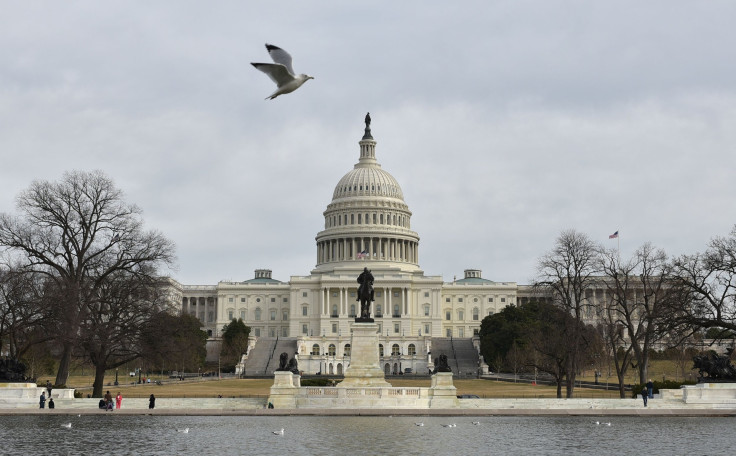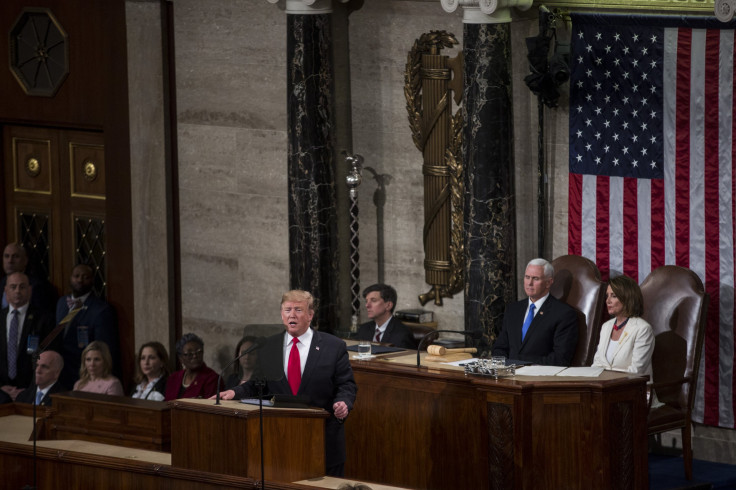Lessons From The Shutdown: Why The Second Deal Worked

To understand why the deal on the government shutdown and border security just reached by Congress, and soon to be signed by the President, succeeded the second time, it’s a must to understand why it failed the first time. As Santayana extolls, “those that ignore history are destined to repeat it.” In today’s news cycle, a month ago is history.
What did we learn? The December shutdown threw, in sharp relief, the difference between what to do from what not to do. That poor practice can be as instructive as good practice. That negative role models are as powerful as positive ones. Frankly, failures are as important than successes, if not more.
A few basic principles.
Negotiations can be convoluted, contentious and confounding. But they don’t have to be intransigent. Ignoring three principles of well-established sound negotiation practice prevented the first negotiation from moving forward, resulting in a stalemate and the longest government shutdown in U.S. History. These concepts are deceptively simple:
1. Binary positioning paints corners that are difficult to emerge from.
2. Public proclamations are tantamount to playground bravado.
3. Principal players should let others do their talking until necessary.
To the first point, toxicity was injected moment the President and Speaker drew a line in the sand (publicly, which we’ll get to). President Donald Trump stated he would not sign any budget that did not include $5.6 billion for a wall at the U.S.-Mexico border. Speaker of the House Nancy Pelosi immediately responded: “Absolutely no money for the wall, not even one dollar.”
This is a prime example of binary thinking: 1 or 0. This “all or none” thinking and resultant proclamations leads both sides to believe that the shutters have closed and neither party can pry them open. Wall or No Wall. $5.6 billion or Not $1. Government shutdown or no government shutdown. State of the Union address or no address.
Yet we know there is a myriad of options between these dichotomies. Take the largest stumbling block, “the wall.” There could have been some “physical barrier,” language that the President advanced, but that gained no traction. It could have been allocating funds for “advanced technology” at legal entry points where most narcotics and their derivatives like fentanyl, find their way into the country. These were prevented from being part of the first negotiations because of binary thinking.
Common ground involves identifying terms in a mutually acceptable manner. Words matter. If parties can agree to what certain terms mean, progress is guaranteed. If not, at the very least they must agree that those terms may be modified. Border security, the “wall,” even illegal immigration, are terms that, if agreed upon, provide a linguistic base for progress. There is an old saying that “you can’t solve a problem you can’t define.”
Inherent in the term, “partial government shutdown” was the notion that it is not binary, yet all discussions were about government being open or shut as if those were the only available options. Some members of both parties suggested that more of the government could be opened, but the principals at the public negotiating table only talked in binary terms.
This brings us to the other two lessons we can learn from the first failed negotiation.
Exacerbating the problem of binary thinking is when principals of the opposing parties make public proclamations about what is or is not an acceptable outcome. This public posturing created the risk, and inevitability, of the shutdown. Not only did they fall prey to binary thinking by defining just two options, but by doing so in public they made it that much more difficult to step back from or alter positions. Let’s call this self-cornering. Unwittingly, they were publicly wedded to an outcome that did not seem to be feasible. What may have been intended as a starting point for negotiations, became a line in the sand.
In negotiations -- business or government -- public proclamations should be in the vaguest of terms. In this case, loosely defined platitudes like -- “we would like the most secure border we can achieve at this time” or “we want open arms with a balance of secure borders” -- would have been interpreted by both sides and the media differently. That’s the point -- because they are not well-defined, there is room for the parties to actually negotiate and change position without losing face or risking public condemnation for hypocrisy. Some people call this diplomacy which seems to have worked well for the last century or two. We’re not talking about “waffling”; rather it’s about keeping avenues open so that all options that serve the greater good can be validated.
By negotiating in public, both sides were trapped by their promises to far-ranging constituencies that could not be backed away from and they were forced to dig in deeper. Just like boys posturing in the playground publicly proclaiming “double-dog dare you” leads to escalating commitments that severely limit movement. It became about positions, not resolutions. About saving face, instead of saving grace. In addition to creating expectations, public statements are reputational and can have long-term consequences like the longest government shutdown in history.
This leads to the third point -- principal players lying low until critical moments. Both, President Theodore Roosevelt and President Jimmy Carter, earned the Nobel Peace Prize for helping overcome intransigence on the part of world leaders. Before the Treaty of Portsmouth in 1905, Tsar Nicholas II Emperor of Russia publicly drew a hard line regarding any territorial concessions. The Empire of Japan drew an equally hard line regarding their interests in Manchuria and Korea. President Teddy Roosevelt offered to act as an intermediary and in three weeks / 12 sessions, was able to negotiate a peace agreement. He did this by negotiating privately, not with the two Emperors but with delegates.
In 1978, President Anwar Sadat of Egypt publicly expressed his positions on a number of items and his disappointment with Israeli Prime Minister Menachem Begin, who likewise spoke openly of his positions and disappointment. President Carter requested and obtained a summit meeting which re-opened dialogue. At the Camp David Summit, negotiations did not involve leaders interacting directly -- it was mostly through President Carter or others, sprinting between cabins at Camp David.

Violation of these three simple principles is why the December talks failed and the February one succeeded.
A bit of chronicle shows how the process was righted.
First, the President and the Speaker fought and then compromised on a secondary issue: having the State of the Union address. These weren’t huge compromises and they weren’t long-term -- but they were a start and signaled the possibility of a compromise on the primary issue of border security.
Second, they withdrew from holding negotiations publicly and put together teams to develop substantial outcomes. The vocal demands of the President and the Speaker were part of the negotiations -- they were present, but no longer omnipresent. These teams were able to explore alternatives without the public spotlight, with few details made public. When negotiating, the less said publicly, the better.
Third, the teams worked in relative anonymity which helped the process. As Harry S. Truman famously quipped, “A great deal can be accomplished as long as you don’t care who gets the credit.” With public egos out of the way, an agreement could be reached that belongs to both sides and to neither side.
We can see the two negotiations were in contrast with each other. The positive outcomes achieved by Presidents Roosevelt and Carter also reflect that having the final decision-maker at a public negotiation table is almost always a very bad idea. The President and Speaker are prideful creators. Legitimately so. But pride is an emotional thing that obscures the logic of reconciliation.
Thinking beyond binary options, not committing oneself publicly, and delegating details to third-parties are just common sense. Principles are not compromised in doing so. Rather they are realized to advance the common good. We don’t pretend to pass judgment on the President or Speaker or Republicans or Democrats, or the press. Our goal is to identify ways to fix the problem, not fix the blame.
It’s natural to think in 1’s and 0’s. Doing so makes the world simpler and linear. Telling others what you’re going to do is a form of braggadocio that is stuffed with self-importance. Removing yourself from the details is an act of surrender that’s hard for anyone who craves control.
“Common sense ain’t common,” says Will Rogers.
We’ve offered just three lessons. None of them are mysterious or difficult to implement. Applied in the second negotiations, they led to a resolution. Agreements are not stumbled upon or discovered like continents or planets. They are made. And the way they are made, matters.
James R. Bailey is professor and Stacy and Jonathan Hochberg Fellow of Leadership Development at the George Washington University School of Business. Bartholomew J. Timm was previously a professor of management at George Washington University and Georgetown University
© Copyright IBTimes 2024. All rights reserved.





















